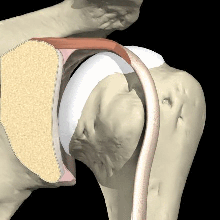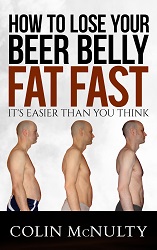This morning I had a Consultant’s appointment to get the result of my MRI and Arthrogram for my shoulder injury. Previously I’d been diagnosed with a PASTA lesion, which is a tear of the supraspinatus rotator cuff tendon, and the MRI was to look for a SLAP tear as well, which is where the cartilage cup inside the shoulder socket (the Labrum) which connects to the bicep tendon, comes away. Here are the findings:
- The PASTA lesion that he identified with an earlier ultra-sound didn’t show up on the MRI.
- I have a “not obvious” 1.5cm SLAP tear.
- Also there’s a small Inferior Glenohumeral Ligament (IGHL) tear.
The PASTA tear may or may not be there and the SLAP tear may not be as big as 1.5cm (which is small anyway) as he said that MRI’s are not great at showing up tears (missing maybe 40% of tears) and where they do, they tend to exaggerate. It seems there’s nothing that can be done about the IGHL tear.
At 39 I’m too old for a normal suture and anchor SLAP tear repair!
However the big news was that apparently at 39 the likelihood of success of normal SLAP tear repair (suture and anchor the labrum back into place) is not good, and so he would do a bicep tenodesis instead, which is where they simply cut the bicep tendon away from the Labrum and anchor it to the humerus (the upper arm bone) instead and bypass the shoulder altogether. That doesn’t sound like much fun!
But it gets worse as the bicep tenodesis has risks of life long shoulder stiffness, or frozen shoulder syndrome and that’s on top of the more obvious risks of infection, the operation simply failing or the tendon rupturing. Either way my Consultant reckons that recovering 75% pre-injury capacity from a bicep tenodesis would be a good result, and that’s after a year or 2 recovery period.
I’m able to do more and more things, e.g. push-ups and burpees
The issue is that I’ve been careful not to make my shoulder injury worse and through exercise and some home base physio, my shoulder has improved to the point that I’m 99% pain free. In fact this morning before my appointment, I actually couldn’t find any shoulder or arm movement that caused me any pain! Now it’s true that I’ve only been going to the gym say once a week, and only been doing a small subset of exercises, e.g. nothing overhead, but I have found that I’m able to do more and more things, e.g. I can now do push-ups where I couldn’t 4 months ago, and I can do burpees too where I couldn’t before. And a weekend full of martial arts recently didn’t give me too many problems.
So this leaves me with something of a dilemma. Do I elect not to have the surgery and keep up with my own recovery and stay 99% pain free through normal life, but maybe will never be able to do some exercises or workouts (no more butterfly pullups for example!)?
Or do I go for the surgery and get a proper repair done, albeit my bicep tendon now won’t be connected to the normal place, but after enduring a long recovery period, there’s still a significant risk that it’ll make the situation much worse than it is now?
I’m to get my butt back down the gym and see what my limits are
It’s a tough decision. Fortunately the delays of the NHS mean that I don’t have to decide today. The current plan is that I’ve booked in the for the surgery, but as there’s a 4-5 month waiting list anyway, I’m to get my butt back down the gym and see what my limits are, starting slowly and working up of course. I have 4 months then to decide if my current ability is sufficient for my needs for the rest of my life, and I suppose if it gets worse again later, I can always get the surgery then.
These things are sent to try us, as they say. But as my father pointed out when I told him: “At least you’re not coming back from Afghanistan with an arm or leg missing!”


